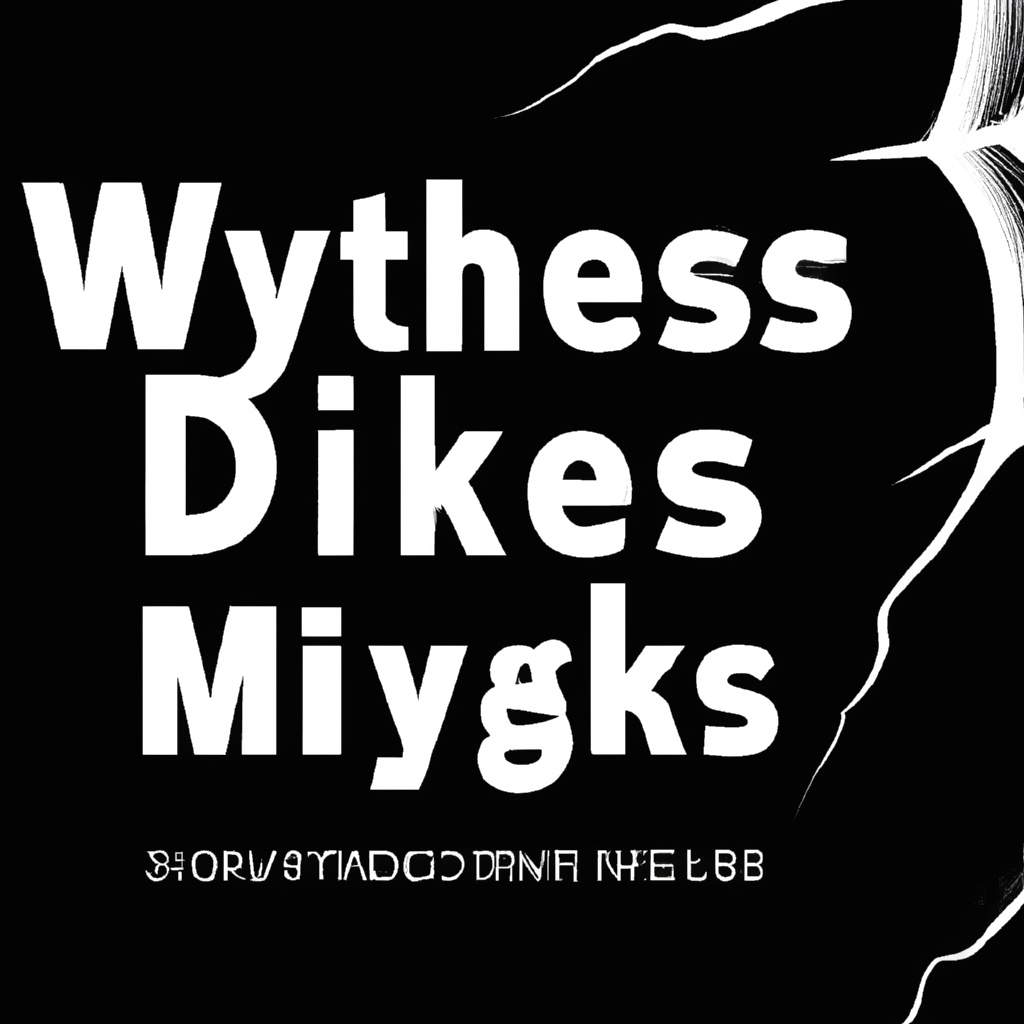
Unveiling the hidden corners of the internet, where anonymity reigns supreme and societies operate under a shroud of secrecy, the Dark Web has long fascinated and intimidated both tech enthusiasts and those seeking a glimpse into the underbelly of the online world. With its notorious reputation, conjuring images of illicit activities and forbidden knowledge, it is easy to understand why the Dark Web captivates our collective imagination. However, as with any hidden realm, myths and misconceptions have clouded our understanding of its true nature. In this article, we embark on a journey to peel back the layers of mystery surrounding the Dark Web and separate fact from fiction, shedding light on its realities and debunking its myths, allowing us to comprehend the true essence of this enigmatic digital realm.
Unveiling the Shadows: Demystifying the Dark Web
Have you ever wondered what lies beneath the surface of the internet? Beyond the well-known websites and the vast seas of information, there exists a mysterious realm known as the Dark Web. This enigmatic corner of cyberspace has intrigued and captivated both curious minds and law enforcement agencies for years, shrouded in secrecy and misconceptions. So, let us embark on a journey to demystify the Dark Web and separate fact from fiction.
Contrary to popular belief, the Dark Web is not solely a hub for illegal activities and nefarious dealings. While it certainly harbors illicit content, such as black market transactions and illegal substances, this clandestine network is also a sanctuary for individuals seeking anonymity and privacy. It is a haven for whistleblowers, journalists, and activists who wish to communicate and share information without fear of reprisal.
So how does one access this hidden underbelly of the internet? The Dark Web exists on encrypted networks, requiring specialized software like Tor (The Onion Router) to access it. Tor protects users’ identities by bouncing their internet traffic through a series of volunteer-operated servers, making it nearly impossible to trace or monitor their online activities. This network anonymity has both its pros and cons, as it allows for free speech and online privacy, but also shields those involved in illicit practices.
Once on the Dark Web, you’ll find a labyrinth of websites, often with nonsensical alphanumeric addresses that distinguish them from their clear net counterparts. These websites range from news forums and anonymous social networks to marketplaces and hacking services. Anonymity and secrecy pervade every aspect, with pseudonyms and digital currencies being the norm.
It is important to note that exploring the Dark Web carries risks, as malicious actors and cybercriminals lurk within its shadowy depths. There is a constant battle between law enforcement agencies striving to combat illegal activities and those who seek refuge within the encrypted realms of the Dark Web. Understanding the Dark Web allows us to separate fact from fiction, ensuring a clearer understanding of this swirling vortex of anonymity that lies beneath the surface of the digital world.
Unearthing the Truth: Debunking Common Misconceptions
It’s time to separate fact from fiction as we embark on a journey to uncover the truth behind some of the most persistent misconceptions. In this eye-opening exploration, we will disprove commonly held beliefs and shed light on the realities that lie just beneath the surface.
1. All bats are blind: Contrary to popular belief, bats are not blind creatures. In fact, many species of bats have excellent eyesight and rely on it while hunting for prey. While it is true that some bats use echolocation to navigate in the dark, this incredible ability is not a substitute for vision but rather an additional tool they possess.
2. Goldfish have a three-second memory: This claim couldn’t be further from the truth. Goldfish are far more intelligent than we give them credit for. Research has shown that these tiny aquatic pets can remember information for months and even distinguish between different colors and shapes. So, the next time you pass by your goldfish tank, rest assured it recognizes you!
3. Bulls get angry at the color red: The idea that bulls have an inherent rage towards the color red is pure fiction. In reality, bulls are color-blind to red. Their aggression is triggered by the movements of the matador’s cape, not the color itself. So, it’s not the flash and fire of red that sets them off; it’s the motion that provokes their response.
4. Cats always land on their feet: While cats are famously agile and often seem to defy gravity, they do not possess an infallible “landing reflex.” Cats can indeed orient themselves in mid-air to land on their feet most of the time, thanks to their exceptional balance and flexible bodies. However, this ability is not foolproof, and falls from great heights can still result in significant injury or worse.
5. We only use 10% of our brains: This myth is a persistent one, but it’s simply not true. Research has shown that our brains are highly active and engaged in various activities throughout the day. Every region of the brain has a purpose, and even the smallest damage can have significant consequences. So, rest assured, your brain is hard at work, even if you’re not aware of it!
In our quest for knowledge, it is important to question the assumptions we hold and challenge the misconceptions we encounter. By unearthing the truth, we can broaden our understanding and pave the way for a more informed and enlightened perspective.
The Hidden Internet Exposed: Separating Myths from Facts
In the vast expanse of the internet lies a realm shrouded in mystery and intrigue – the hidden internet. Often referred to as the dark web or deep web, this hidden corner of cyberspace elicits both fascination and fear. While many myths and misconceptions surround the hidden internet, it is essential to separate fact from fiction and gain a deeper understanding of this enigmatic realm.
Myth 1: The hidden internet is solely a hub for illegal activities.
- Fact: While it is true that some illicit activities take place in the hidden internet, painting it solely as a den of cybercriminals would be an oversimplification. It is important to remember that this hidden realm also offers a haven for activists, journalists, and individuals seeking privacy and anonymity in repressive regimes. Free speech, whistleblowing, and information sharing are fundamental motivations for many hidden internet users.
Myth 2: Accessing the hidden internet requires advanced technical skills.
- Fact: Contrary to popular belief, gaining access to the hidden internet is not as daunting as it may seem. All it requires is a specialized browser, such as Tor, which allows users to connect to sites with ‘.onion’ domains. Specialized search engines and directories also exist to help navigate this hidden realm. However, caution and discretion are advised, as the hidden internet can be a breeding ground for scams and malicious actors.
Myth 3: The hidden internet is entirely awash with illegal products and services.
- Fact: While it is true that underground marketplaces offering illegal goods and services exist on the hidden internet, they are not the sole occupants. Just as in the visible internet, the hidden internet hosts a variety of legitimate platforms, including forums, marketplaces, and even educational resources. It is essential to acknowledge that the hidden internet is a diverse landscape that encompasses both the dark and the benign.
Myth 4: The hidden internet is impenetrable to law enforcement.
- Fact: While the hidden internet does provide a higher level of anonymity, it is not impervious to law enforcement. In recent years, agencies worldwide have made significant strides in tackling cybercrime within the hidden internet, using sophisticated techniques to track down criminals and shut down illegal operations. Despite the challenges, law enforcement continues to adapt and develop strategies to combat criminal activities on the hidden internet.
By separating myths from facts, we can gain a clearer understanding of the hidden internet and dispel some of the misconceptions surrounding it. Just like the visible internet, this dark corner of cyberspace is a complex ecosystem filled with both good and evil. It offers a space for activism, privacy, and anonymous communication, but also harbors illegal activities that require vigilance to protect oneself. Exploring the hidden internet with caution and an open mind can lead us to a more informed perspective on this mysterious realm.
Journey into the Abyss: Exploring the Realities of the Dark Web
The dark web is a mysterious realm that captures the imagination of many curious individuals. A place where anonymity is paramount, and the most encrypted secrets lie hidden. Embarking on a journey into the abyss of the dark web is not for the faint of heart. It is a realm that reveals the underbelly of our digital world, where the realities are far from ordinary.
Once you delve into the depths of the dark web, you will encounter a multitude of bizarre and illicit activities. From illegal drug marketplaces to hacking forums and contract killers for hire, the dark web is a place where laws and morals intertwine in a distorted dance. Transactions are made using cryptocurrencies, further shrouding identities, making it difficult for law enforcement to trace and apprehend perpetrators.
Exploring the dark web is like stepping into a twisted carnival, where the grotesque and the forbidden are put on display. It is populated by various communities and forums, each with their own interests and ideologies. From extremist political groups to illegal pornography rings, the dark web is a testament to the darkest corners of human nature.
Beneath the layers of depravity, however, lies a glimmer of unexpected good. Whistleblowers and activists find solace in the dark web, utilizing its anonymity to expose corruption and bring about positive change. It serves as a platform for suppressed voices, enabling journalists living under oppressive regimes to communicate and share information with the world.
As you navigate through the dark web, you must exercise extreme caution. Layers upon layers of encryption shield your identity, but lurking behind those digital walls are hackers and cybercriminals who are eager to exploit any vulnerability. The dark web is a place where curiosity can quickly turn into danger, and with every step you take, its grip on you grows stronger.
The dark web is a mysterious place, constructed of layers of mystery and intrigue. It can be a treasure trove of knowledge and an unfathomable gateway of hidden secrets, but itnavigating the treacherous waters requires knowledge and caution. By discovering the myths and realities of the dark web, we can better understand the hidden internet and possibly even learn how to unlock some of its secrets.



